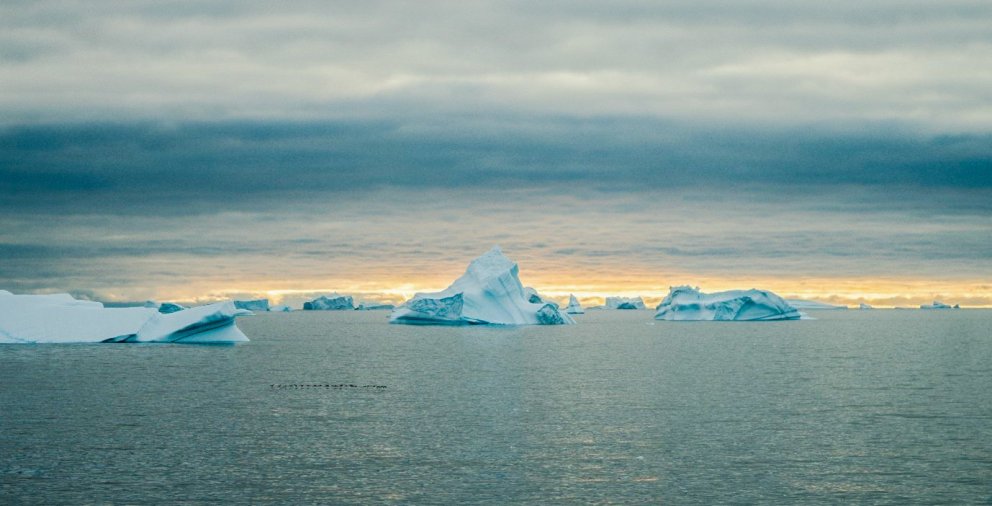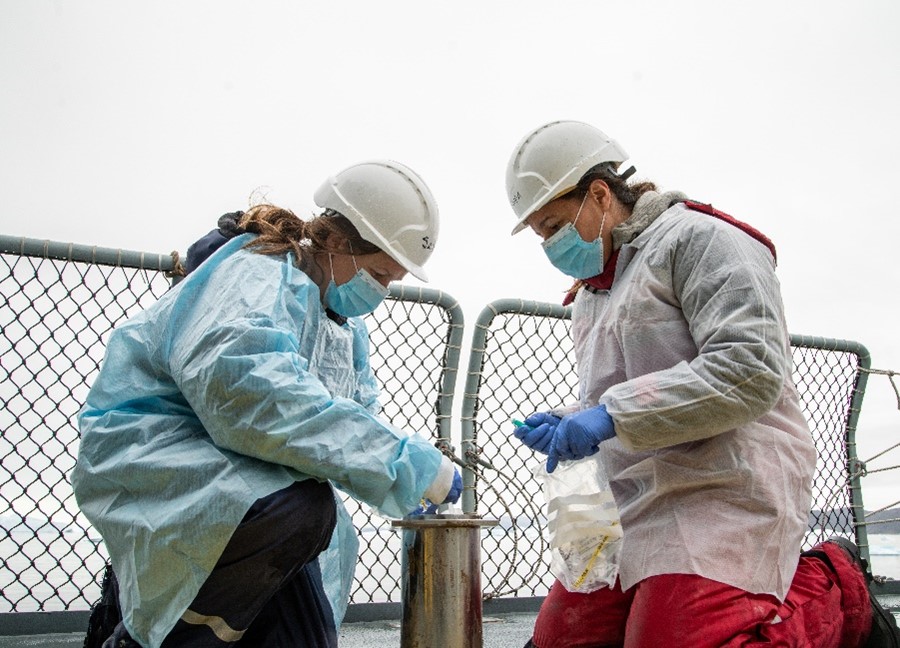- Research
- Fish tagging
- Lumpfish research
- Oceanography
- Seabed mapping
- Arnarfjörður
- Drekasvæði
- Ísafjarðardjúp
- Jökulbanki
- Jökuldjúp
- Kolbeinseyjarhryggur and adjacent area
- Kolluáll
- Langanesgrunn
- Látragrunn
- Nesdjúp
- Reykjaneshryggur and adjacent area
- Selvogsbanki
- South of Selvogsbanki
- South of Skeiðarárdjúp
- South of Skerjadjúp
- Southeast of Lónsdjúp
- Southwest of Jökuldjúp
- Suðausturmið
- Suðurdjúp
- Vesturdjúp
- East of Reykjaneshryggur
- Vestfjardarmid
- Seal research
- Whale Research
- Advice
- About
Ancient DNA from a sea-ice microbe tells tales of past climate in the Arctic
25. January 2024
 (Underground Channel, Frederik Wolff)
(Underground Channel, Frederik Wolff)
Ancient DNA from a sea-ice microbe tells tales of past climate in the Arctic
"A new research method utilizes ancient DNA preserved in ocean sediments to provide reliable information of sea ice occurrence in the Arctic," says Sara Harðardóttir, former postdoc at The Geological Survey of Denmark and Greenland (GEUS) and now Researcher at the Marine and Freshwater Research Institute, Iceland, and first author on a research article published in the Nature portfolio journal Communications Earth and Environment this week, about the newly developed method.
The Arctic is warming around four times faster than the rest of the globe. According to the latest IPCC projections, there will be no summer sea ice in the Arctic region within decades.
Data on sea ice is of great interest to many climate researchers because the occurrence of sea ice both geographically speaking and over time affects conditions in the atmosphere and the ocean. However, we have a poor understanding of sea ice before the satellite era.
Especially accurate longer time series of past sea ice occurrence that gives us an understanding of sea ice in the Arctic in a geological timescale are in demand, as they can provide insights into climate change and be used to make future climate projections.
Filling the gap via proxy
We have satellite data from 1979 and onward but before that the best we can do is qualified guesses.
“Using this method, we are able to produce data that are the next best thing to an actual measurement– measurements of a proxy,” says Harðardóttir. The method can help us fill the gap in our knowledge about past sea ice occurrence in the arctic via the so-called proxies. A proxy is something other than the actual thing – in this case sea ice – that acts like a tattletale about the thing we want to know. It is like how you can gain insights into the biodiversity of an area you might not have access to by counting the number and variety of bugs on the windshields of cars passing through the area.”
“Sea ice harbours a unique microscopic ecosystem. What we did here was to test a new proxy for sea ice by targeting DNA of a sea ice microbe that is very specific but also rare” says Sofia Ribeiro, senior author of the article and senior researcher, Geological Survey of Denmark and Greenland (GEUS).
The ancient DNA of the microbe in question, Polarella glacialis or just P. glacialis for short, can be preserved in marine sediments for thousands of years. It is like an archive of notes on sea ice just waiting to be read – and the researchers now figured out how to read them.
Callibration for going back in time
“We compared the gene copy numbers of P. glacialis in modern samples from around Greenland and they follow the distribution of sea ice we see today. That is our “calibration” for going back in time,” says Sara Harðardóttir.
The researchers quantified P. glacialis DNA in Arctic marine and fjord surface sediments and a sediment core from northern Baffin Bay spanning 12,000 years. Sea ice and sediment trap samples confirmed that cysts of P. glacialis are common in first-year sea ice and sinking particulate matter following sea-ice melt.
“The time-series we are now able to create using this method can be used to inform climate modelling on future climate and ecosystem adaption to climate change by feeding the models with even more accurate input,” says Sofia Ribeiro.
Source: The Geological Survey of Denmark and Greenland (GEUS)

The narrator, sea-ice dinoflagellate Polarella glacialis, leads us through earth's history.
Polarella glacialis is an extremophile specifically adapted to survival in sea ice and its
distribution is limited to areas where sea ice forms in winter (figure b).

Sara Harðardóttir and Sofia Ribeiro taking samples of marine sediments in Greenland.
Mynd: Underground Channel, Frederik Wolff
